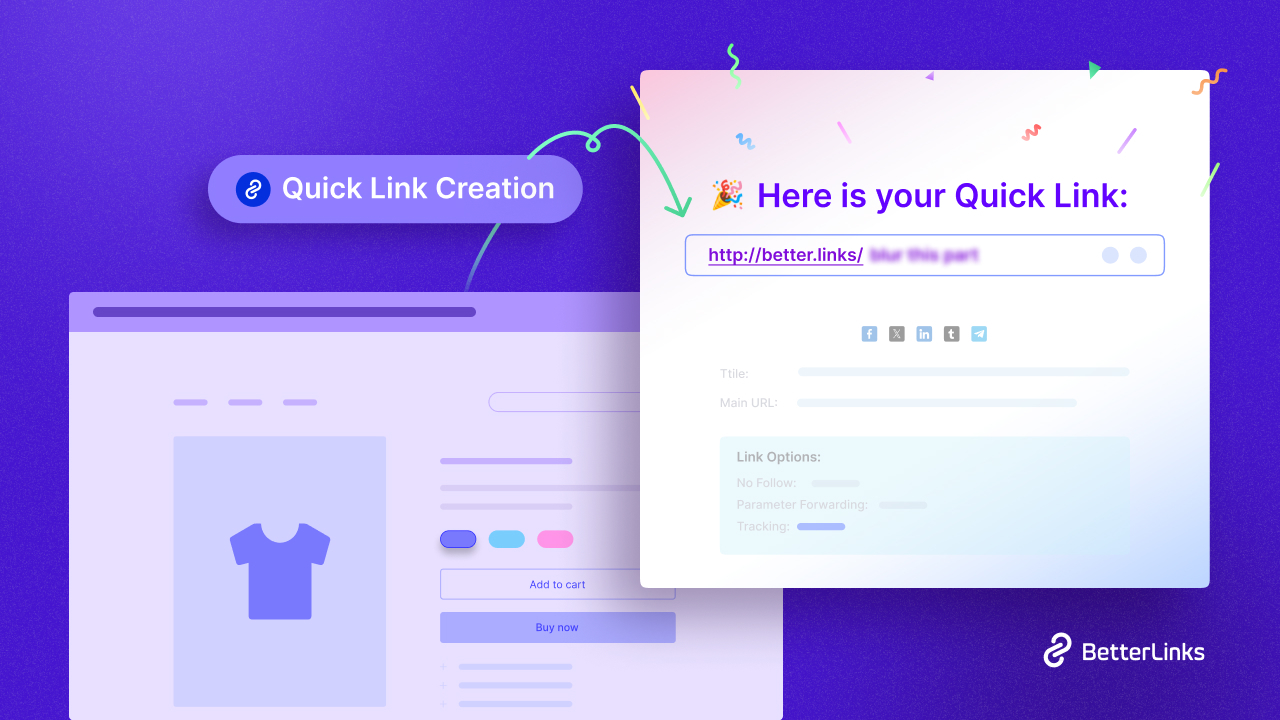Do you want to reach out to your target audience accurately when they are searching for the products or services you offer? Imagine your brand standing out in the crowd and driving traffic, leads, and sales like never before. The Search Engine Marketing (SEM) can do that for your business.

Whether you are an expert marketer or a business owner looking to expand your online presence, understanding SEM is crucial to staying ahead of the competition. In this comprehensive blog, we will walk you through everything you need to know about SEM, from the basics to advanced strategies. Let us jump right in and explore.
Why You Should Go For SEM Over SEO For Your Business
So, what exactly is SEM? In simple terms, SEM is a digital marketing strategy used to increase the visibility of a website in search engine results pages (SERPs) through paid advertising. Think of it as paying for a prime spot in a crowded market to make sure people see your product first. It is like renting a billboard on a busy highway.
Now, you might be wondering how search engine marketing is different from SEO (Search Engine Optimization). While both aim to boost your website’s visibility, they go about it in different ways:
- SEO: This is all about earning your spot in the search results organically. It involves optimizing your website’s content, structure, and various other factors to make it more attractive to search engines like Google. It is a slow and steady process that builds long-term valuable marketing results.
- SEM: This includes SEO but primarily focuses on paid strategies. It is about paying for ads that appear in search results. These ads are usually marked as “Sponsored” or “Ad” and appear at the top or bottom of the SERPs. Search engine marketing provides immediate visibility and can drive quick traffic to your site.
Different Types of Search Engine Marketing
Search engine marketing is not just about one type of ad. There are several different types of SEM, each with its own unique benefits and use cases:
- Paid Search Ads: These are the text ads you see at the top and bottom of search engine results pages. They are triggered by specific keywords that users search for. For example, if you search for “best running shoes,” you will likely see ads from various shoe brands at the top of the results.
- Shopping Ads: These are particularly useful for eCommerce businesses. Shopping ads display product images, prices, and store names directly in the search results. They are highly visual and can attract clicks from users who are ready to buy. For instance, if you search for “laptop,” you will see images of different laptops with their prices and ratings.
- Display Ads: Unlike search ads, display ads appear on various websites across the internet, not just in search results. They can be images, videos, or interactive ads and are great for brand awareness. These ads are shown to users based on their browsing behavior and interests.
- Video Ads: These are ads that appear before, during, or after videos on platforms like YouTube. They are excellent for engaging users with compelling visual content.
- App Campaigns: These ads promote mobile apps and appear in search results, on YouTube, and across the Google Display Network. They are designed to drive app downloads and engagement.
The Role of Search Engines in Search Engine Marketing
Search engines like Google, Bing, and others play a crucial role in search engine marketing. They provide the platforms where these ads are displayed and offer tools to help advertisers create, manage, and optimize their campaigns.

- Google Ads: This is the most popular platform for SEM. It allows advertisers to bid on keywords and create ads that appear in Google search results and across the Google Display Network. Google Ads also provides tools for keyword research, ad creation, and performance tracking.
- Bing Ads: While not as dominant as Google, Bing Ads (now known as Microsoft Advertising) is still a valuable platform, especially for reaching a different audience. It works similarly to Google Ads, allowing advertisers to bid on keywords and display ads in Bing search results.
- Other Search Engines: Platforms like Yahoo, Baidu, and Yandex also offer search engine marketing opportunities, particularly in specific regions where they are more popular.
The Importance of Search Engine Marketing Strategies in 2024
Search engine marketing in 2024 has growing significance due to Increased Online Competition. With more companies going digital, the competition for online visibility has increased immensely. It is like trying to shout over a crowd at a rock concert, right? By using paid ads, Search engine marketing ensures your business stands out in search engine results, making it easier for potential customers to find you.
Think of it as renting a prime billboard spot on the busiest highway. With the right search engine marketing strategy, you can cut through the noise and grab the attention of your target audience, driving more traffic to your website and boosting your sales.
Impact of AI, Machine Learning, and Automation on SEM Strategies
The integration of AI, machine learning, and automation has revolutionized SEM. Imagine having a super-smart assistant who can analyze tons of data in seconds, predict trends, and optimize your campaigns on the fly. That is what AI brings to the table.
AI-powered tools can automate repetitive tasks like keyword research, bid adjustments, and ad testing. This not only saves time but also enhances efficiency. For instance, AI can dynamically adjust your bids based on real-time data, ensuring you get the best bang for your buck. It can also personalize ad content to match user intent, making your ads more relevant and engaging.
Machine learning algorithms continuously learn from past data, improving their predictions and recommendations over time. This means your search engine marketing campaigns get smarter and more effective, helping you stay ahead of the competition. It is like having a crystal ball that guides your marketing decisions, ensuring you are always one step ahead.
Reaching Your Target Audience Effectively With Search Engine Marketing
Finally, let us talk about the magic of reaching the right people at the right time. Search engine marketing allows you to target specific keywords, demographics, and locations with pinpoint accuracy. It is like having a GPS for your marketing efforts, guiding your ads directly to those who are most likely to convert.
By using Search engine marketing, you can ensure your ads appear when potential customers are actively searching for products or services like yours. This intent-driven approach means you are not just casting a wide net and hoping for the best. Instead, you are strategically placing your ads in front of people who are already interested, increasing the chances of driving qualified traffic and generating conversions.
Setting Up Your Search Engine Marketing Campaign
Launching a successful search engine marketing campaign requires careful planning and execution. It is a multi-step process that involves keyword research, ad creation, landing page optimization, bidding strategy selection, and budget allocation. Let us get into each of these aspects.
Keyword Research

The foundation of any search engine marketing campaign lies in identifying the right keywords. These are the terms or phrases that potential customers use when searching for products or services like yours. Thorough keyword research is crucial to ensure your ads are displayed to the most relevant audience.
You can begin by brainstorming a list of keywords related to your business. Then, leverage tools like Google Keyword Planner or SEMrush to expand your list and gather valuable insights such as search volume, competition level, and cost-per-click estimates. This data will help you prioritize the most promising keywords for your campaign.
Ad Creation
With your keyword list in hand, it is time to craft compelling ad copy. Your ads should be attention-grabbing, relevant, and aligned with the user’s search intent. Highlight your unique selling proposition, use persuasive language, and include a clear call to action.
Remember, you have limited character space, so every word counts. Ensure your headlines and descriptions are concise yet informative, enticing users to click through to your landing page.
Landing Page Optimization
Your landing page is the destination where users arrive after clicking on your ad. It is crucial to optimize this page for maximum conversions. A well-designed landing page should be visually appealing, easy to navigate, and provide a seamless user experience.
Focus on creating a clear value proposition, using persuasive copy, and including compelling visuals or videos that showcase your product or service. Additionally, ensure your landing page aligns with the messaging and promises made in your ad copy to maintain consistency and build trust with potential customers.
Bidding Strategy Selection
Choosing the right bidding strategy is essential for maximizing your search engine marketing campaign’s effectiveness and return on investment. There are various bidding strategies available, each suited for different goals and scenarios.
For example, if your primary objective is to drive maximum traffic to your website, you may consider a cost-per-click (CPC) bidding strategy, where you pay for each click on your ad.
If you prioritize conversions, a cost-per-acquisition (CPA) bidding strategy might be more suitable, where you pay for each conversion (e.g., a sale or lead). It is crucial to understand the complexities of each bidding strategy and align it with your specific campaign goals and budget.
Budget Allocation
Determining an appropriate budget for your search engine marketing campaign is a critical step. It involves considering factors such as your industry’s competition level, target audience size, and desired campaign duration.
Start by setting realistic goals and estimating the potential return on investment (ROI) for your campaign. This will help you allocate a budget that aligns with your business objectives while ensuring you do not overspend.
Additionally, consider implementing budget management strategies, such as daily or monthly caps, to maintain control over your ad spending and prevent unexpected costs.
Advanced SEM Strategies for Business
In 2024, Artificial Intelligence (AI) and Machine Learning (ML) are revolutionizing Search Engine Marketing (SEM). These technologies are not just buzzwords; they are game-changers that can significantly enhance the effectiveness of your search engine marketing campaigns.
Automated Bidding
Automated bidding is one of the most impactful applications of AI in search engine marketing. It uses machine learning algorithms to adjust your bids in real time, ensuring that you get the best possible return on investment (ROI). For instance, Google’s Smart Bidding strategies, such as Target CPA (Cost Per Acquisition) and Maximize Conversions, leverage AI to optimize bids based on various signals like device, location, and time of day. This means you can focus on strategic planning while the AI handles the nitty-gritty details of bid management.
Local SEO and Voice Search
Local businesses can benefit immensely from voice search optimization. Many voice searches are location-based, with users looking for nearby services or products. Ensuring that your business information is accurate and up-to-date across all online directories can improve your chances of appearing in local voice search results. Incorporating location-specific keywords and optimizing your Google My Business profile are also crucial steps.
Audience Targeting
AI and ML also play a crucial role in advanced audience targeting. These technologies analyze vast amounts of data to identify patterns and predict which users are most likely to convert. By understanding user behavior and preferences, AI can help you create highly specific audience segments. For example, you can target users who have shown interest in similar products or services, thereby increasing the likelihood of conversions. This level of precision was unimaginable a few years ago but is now a reality thanks to AI.
The Impact of Voice Search and How to Optimize It
Voice search is no longer a futuristic concept; it is here and growing rapidly. With the proliferation of smart speakers and voice assistants like Siri, Alexa, and Google Assistant, optimizing for voice search has become essential.
Understanding Voice Search Queries
Voice search queries are typically longer and more conversational than text-based searches. People tend to ask questions in a natural, conversational tone. For example, instead of typing “best Italian restaurant,” a user might ask, “What is the best Italian restaurant near me?” This shift necessitates a change in keyword strategy. You should focus on long-tail keywords and phrases that reflect natural language patterns.
Optimizing Content for Voice Search
To optimize for voice search, your content must provide concise and direct answers to common questions. This increases the chances of your content being featured in voice search results, often as a featured snippet. Structuring your content in a question-and-answer format can be particularly effective. Additionally, using schema markup can help search engines understand the context of your content, improving its visibility in voice search results.
The Importance of Mobile Optimization and Responsive Design

In 2024, mobile optimization is not just needed, it is important. With the majority of online interactions happening on mobile devices, ensuring that your website is mobile-friendly is crucial for search engine marketing success.
Responsive Design
Responsive design ensures that your website adapts to different screen sizes and devices, providing a seamless user experience. This is vital because a poor mobile experience can lead to high bounce rates, negatively impacting your search engine rankings. A responsive design improves navigation, readability, and overall user satisfaction, which are key factors in retaining visitors and encouraging conversions.
Accelerated Mobile Pages (AMP)
Implementing Accelerated Mobile Pages (AMP) can significantly enhance your mobile site’s performance. AMP creates stripped-down versions of web pages that load almost instantly, improving user experience and reducing bounce rates. This can lead to better search engine rankings and higher engagement rates.
Mobile-Optimized Content
Creating content that is optimized for mobile devices involves more than just ensuring fast loading times. It also means designing visually appealing and easy-to-navigate pages. Use larger fonts, concise paragraphs, and high-quality images that load quickly. Interactive elements like buttons and forms should be easy to use on smaller screens
Measuring and Optimizing Your Search Engine Marketing Campaigns
When it comes to Search Engine Marketing (SEM), tracking the right metrics is crucial for understanding and improving your campaign’s performance. Here are some key metrics you should focus on:

- Click-Through Rate (CTR): This metric measures the percentage of people who click on your ad after seeing it. A high CTR indicates that your ad is relevant and compelling to your audience. To calculate CTR, divide the number of clicks by the number of impressions and multiply by 100.
- Cost Per Click (CPC): CPC tells you how much you are paying for each click on your ad. It is essential to monitor this to ensure you are not overspending. Lowering your CPC while maintaining a high CTR can improve your return on investment (ROI).
- Conversion Rate: This metric shows the percentage of visitors who complete a desired action, such as making a purchase or filling out a form. A high conversion rate means your landing page and overall campaign are effective. To calculate it, divide the number of conversions by the number of clicks and multiply by 100.
- Cost Per Conversion (CPA): CPA measures the cost of acquiring a customer who completes a desired action. It is calculated by dividing the total cost of your campaign by the number of conversions. Keeping your CPA low while maintaining a high conversion rate is ideal.
- Quality Score: This is a metric used by Google Ads to determine the relevance and quality of your keywords and ads. A higher Quality Score can lead to lower CPCs and better ad positions.
- Return on Ad Spend (ROAS): ROAS measures the revenue generated for every dollar spent on advertising. It is calculated by dividing the total revenue by the total ad spend. A higher ROAS indicates a more profitable campaign.
A/B Testing For Advance Measurements

A/B testing, also known as split testing, is a method of comparing two versions of an ad, landing page, or other campaign elements to determine which one performs better. Here is why A/B testing is essential for allowing for data-driven decisions, improved conversion rates, budget optimization, and reduced risk by implementing changes based on actual data rather than assumptions.
Tips for Understanding SEM Data Through A/B Testing
To make the most of your search engine marketing data, follow these tips:
- Set Clear Goals and KPIs: Before analyzing data, define your goals and key performance indicators (KPIs). This will help you focus on the metrics that matter most to your business.
- Segment Your Data: Break down your data by different dimensions, such as campaign, ad group, keyword, device, and location. This will help you identify which segments are performing well and which need improvement.
- Use Analytics Tools: Tools like Google Analytics and Google Ads provide valuable insights into your campaign performance. Use these tools to track metrics such as bounce rate, time on site, and pages per session.
- Compare Time Periods: Analyze your data over different time periods to identify trends and seasonality. This can help you understand how your campaign performance changes over time.
- Run A/B Tests Regularly: Continuously test different elements of your campaign to find the best-performing variations. Use the insights gained from these tests to make data-driven optimizations.
- Monitor Competitors: Use competitive analysis tools to understand what your competitors are doing. This can provide insights into industry trends and help you stay ahead of the competition.
Integrating SEM with Other Digital Marketing Channels
Search Engine Marketing (SEM) and Search Engine Optimization (SEO) are often seen as two sides of the same coin. While search engine marketing focuses on paid advertising to achieve immediate visibility, SEO aims at improving organic search rankings over time. Here is how you can integrate these two strategies:
- Keyword Research: Start with comprehensive keyword research that serves both SEM and SEO. Use tools like Google Keyword Planner and SEMrush to identify high-performing keywords. These keywords can be used to optimize your website content (SEO) and to target your paid ads (SEM).
- Data Sharing: Use the data from your search engine marketing campaigns to inform your SEO strategy. For instance, if certain keywords are performing well in your paid campaigns, consider optimizing your website content for those keywords to improve organic rankings.
- A/B Testing: Conduct A/B testing on your search engine marketing ad copies to determine which messages resonate best with your audience. Use these insights to refine your SEO content strategy.
- Landing Page Optimization: Ensure that the landing pages for your search engine marketing campaigns are also optimized for SEO. This includes using relevant keywords, creating high-quality content, and ensuring a good user experience.
Integrating Search Engine Marketing with Social Media Marketing

Social media marketing and search engine marketing can work together to amplify your brand’s reach and engagement. Here is how you can integrate these two channels:
- Cross–Channel Campaigns: Run coordinated campaigns across search engine marketing and social media platforms. For example, if you are promoting a new product, use SEM to target search engine users and social media ads to reach a broader audience.
- Retargeting: Use retargeting strategies to re-engage users who have interacted with your SEM ads but did not convert. Show them relevant ads on social media platforms to keep your brand top-of-mind.
- Content Sharing: Share high-quality content created for your search engine marketing campaigns on social media. This not only increases the reach of your content but also drives traffic back to your website.
- Social Proof: Leverage social proof such as reviews, testimonials, and user-generated content in your SEM ads. This can enhance the credibility of your ads and improve click-through rates.
Integrating SEM with Content Marketing
Content marketing is all about creating valuable content that attracts and engages your target audience. Integrating SEM with content marketing can help you maximize the impact of your content. Here is how:
- Content Promotion: Use SEM to promote your high-quality content. For instance, if you have published a comprehensive guide or a whitepaper, use SEM ads to drive traffic to that content.
- Keyword Insights: Use the keyword insights from your SEM campaigns to inform your content strategy. Create content around high-performing keywords to attract more organic traffic.
- Landing Page Consistency: Ensure that the landing pages for your SEM ads are consistent with your content marketing efforts. This includes using similar messaging, visuals, and calls-to-action.
- Performance Tracking: Track the performance of your content through SEM analytics. Use this data to refine your content strategy and create more targeted and effective content.
Implement a Holistic Digital Marketing Strategy
Adopting a holistic digital marketing strategy that integrates SEM with SEO, social media marketing, and content marketing offers several benefits:
- Increased Visibility: By combining the strengths of different channels, you can achieve greater visibility across search engines and social media platforms.
- Enhanced Engagement: Integrated campaigns create a seamless experience for your audience, leading to higher engagement and better user experience.
- Improved ROI: A holistic approach allows you to optimize your marketing budget by leveraging the strengths of each channel. This can lead to better returns on investment.
- Consistent Messaging: Integrating different channels ensures that your brand message is consistent across all touchpoints, reinforcing your brand identity.
- Data-Driven Decisions: By combining data from SEM, SEO, social media, and content marketing, you can make more informed decisions and continuously optimize your strategy.
SEM Trends and Predictions To Grow Your Business in 2024
Search Engine Marketing (SEM) in 2024 is set to be revolutionized by several key trends and innovations. AI-powered ads are at the forefront, enabling more efficient and targeted campaigns through automation and predictive analytics.
Voice search optimization is becoming crucial as more users rely on voice assistants like Siri and Alexa, necessitating the use of long-tail keywords and natural language phrases. The integration of augmented reality (AR) and virtual reality (VR) in SEM will create immersive advertising experiences. Blockchain technology is also expected to enhance transparency and security in online transactions.
Experts predict that staying updated with these trends will be essential for businesses to maintain a competitive edge. Compliance with privacy regulations such as GDPR and CCPA will remain critical, and the focus on mobile-first indexing will continue to grow.
As SEM expands, using AI to automate and optimize campaigns, creating personalized user experiences, and ensuring compliance with regulations will be key strategies for success. Businesses must stay informed and adapt to these changes to effectively reach their target audiences and drive conversions in the dynamic digital landscape of 2024
We hope you found this blog helpful and If you want to read more exciting blogs, subscribe to our blog page, and join our Facebook community to get along with all WordPress experts.












